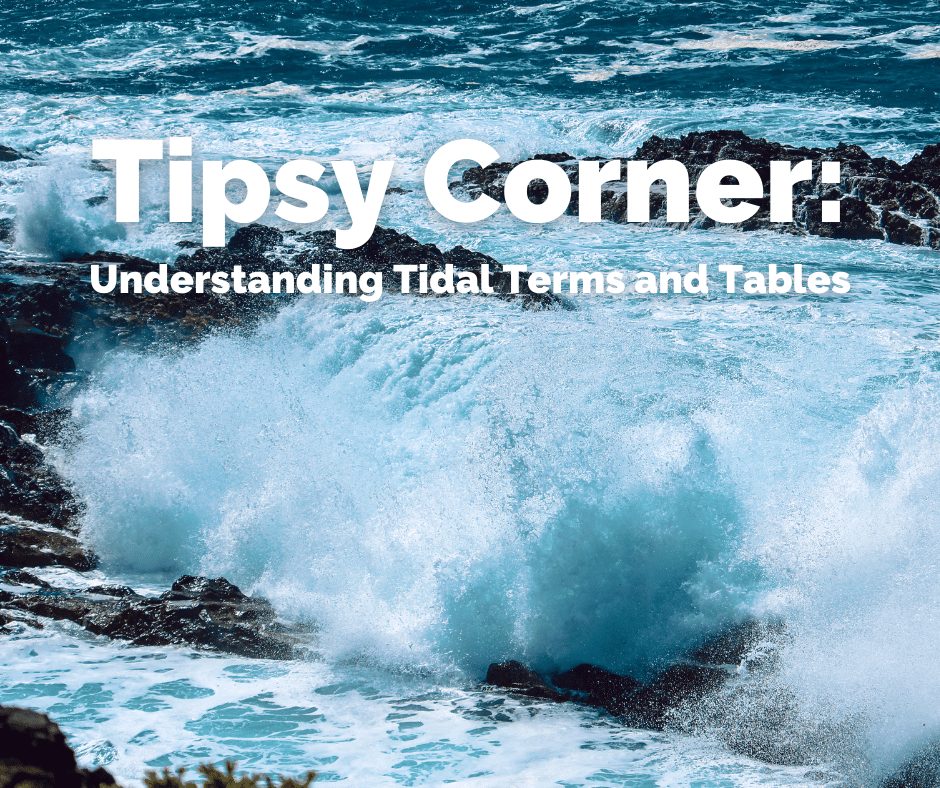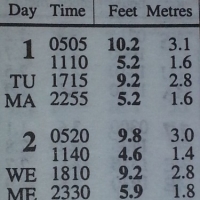
Bruce Stott is president and chief instructor of Gulf Islands Cruising School Ltd. in Sidney, BC. He’s sharing his know-how, to improve safe navigation for everyone.
If you are navigating a boat in coastal waters, then you need to be aware of the rise and fall of the tides. I will discuss the definition and importance of knowing the tides, where to find tidal information, and how to read the publication, Tide and Current Tables.
Definitions
Tides are the vertical motion of the water caused primarily by the gravitational pull of the sun and the moon. Therefore tides rise and fall. The terms flood tide and ebb tide are incorrect.
Reference Port – a place where the Tide has been predicted and listed in the Tables.
Secondary Port – a place where both high water and low water time and height differences are tabulated relative to a Reference Port
Time – the standard time zone for the reference port is given in the heading of the Tables. When Daylight Saving Time is in effect, one hour must be added to the time in the Tables.
Spring Tide – when the sun and moon are on the same or opposite sides of the Earth, new moon or full moon. Higher highs and lower lows.
Neap Tide – when the sun and moon are at 90 degrees to each other, first and last quarter. Higher lows and lower highs.
Chart Datum – a horizontal plane which is the reference for depths. Depths are measured below Datum and tidal heights are measured above datum. In Canadian waters, Lowest Normal Tide is commonly used.
On the British Columbia coast, the tides are mixed semi-diurnal. This means there are two highs and two lows each day and the heights of the two highs and the two lows are different.
How Tides Affect Boating
Knowing the height of the tide is of vital importance while boating in coastal waters.
1. While anchoring – you need to know both the high and low water heights in order to determine two factors. What will be the length of anchor rode you will need to use overnight and will there be enough depth to float your vessel at low tide? During my many years of boating, I have seen a number of vessels aground because the skippers did not consider the fall of the tide overnight.
2. Staying at a marina – will there be adequate water at the wharf to keep your vessel afloat during your stay?
3. Entering harbour – some harbours, especially at river mouths, have a bar at the entrance. You need to know there is adequate clearance for your vessel over the bar.
How To Read a Tide Table

The times and heights for the daily high and low waters at the Reference Port are predicted and given in the daily tables.
The image at the top of this article is an example taken from the Canadian Tide and Current Tables for Fulford Harbour.
The Day column gives the date of the month and the abbreviation for the day of the week in both English and French.
The Time column gives the Time in 24 hour notation. The next two columns give the height of the Tide above chart datum in feet and metres.
If you are going to anchor overnight and you anchored at 1715, the height of the tide would be 9.2 feet or 2.8 metres more than the depth given on the chart. The question you would ask – is there enough tidal height for my vessel to remain here safely overnight?
Look at the next line and you will see that the tide has fallen to 5.2 feet or 1.6 metres by 2255.
Therefore, the depth under your vessel will have been reduced by 4.0 feet or 1.2 metres.
Early the next morning, 0520, the tide will rise to 9.8 feet or 3.0 metres. We will have 9.8 – 9.2 = 0.6 feet or 3.0 – 2.8 = 0.2 metres more water under your vessel than you had when you anchored last night.
If you sleep in the next morning, at 1140 the tide will fall to 4.6 feet or 1.4 metres and you will have 9.2-4.6=4.6 feet or 2.8-1.4=1.4 metres less water than when you anchored. If you anchored in shallow water, you may be aground.
In this article I have outlined the definition of tides, knowing where to find the information and how to read the tables. When navigating in coastal waters, understanding tides is vitally important to keeping your crew and vessel safe.
Safe boating,
Bruce Stott
Chief Instructor
